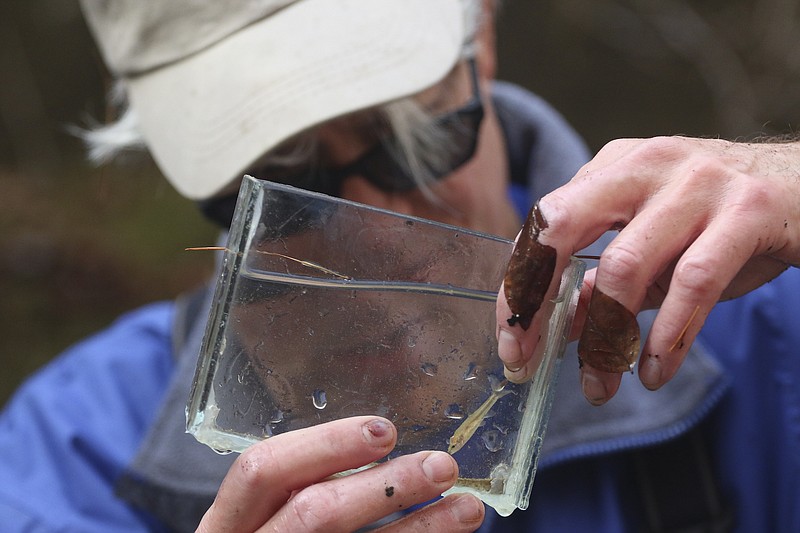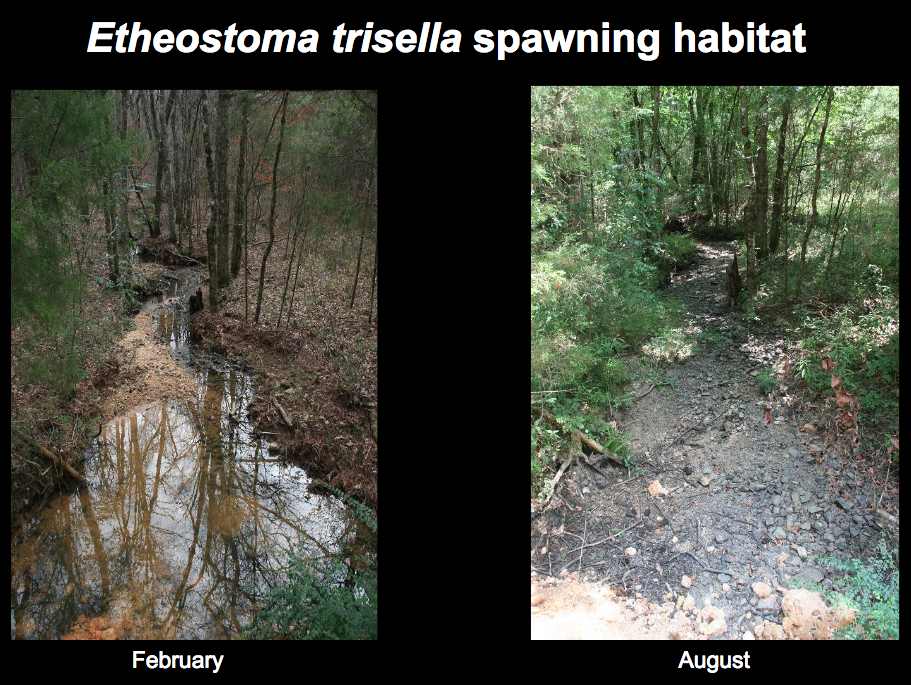Biologists are concerned the latest proposed Environmental Protection Agency rollbacks could harm an endangered fish, salamanders and other aquatic creatures in the Chattanooga area. But the agency argues changes are necessary for "promoting economic growth, minimizing regulatory uncertainty, and showing due regard for the roles of the Congress and the States under the Constitution."
The latest rollbacks would change the definition of what constitutes a body of water under the Clean Water Act, removing all federal protection for temporary waterways that play a crucial role in the lives of some freshwater species.
"What this does, it takes the responsibility for pollution from the entity creating it and puts it on everybody downstream," said Geoff Gisler, Southern Environmental Law Center clean water program leader. "It's going to result in worse water quality."
A years-long battle to define "waters of the United States" included court cases and Supreme Court hearings. A team of scientists created a definition that was officially adopted by the Clean Water Act in 2015.
The definition protected all navigable waters and waters that were considered to be crucial to the quality of the nation's water system. The new ruling strips away the 2015 ruling and strikes several pre-2015 protections.
"A very strong case was made with an exhaustive assessment of the science," Sewanee: The University of the South professor of biology Jonathan Evans said. "In 2015, the Obama administration released its water rule, which defined how the Clean Water Act would be implemented in regards to these isolated wetlands. The science had been done, and places like the prairie potholes of the Midwest, the vernal pools of California and the pocosins in North Carolina would receive protection."
The definition provided protection for these seasonal wetlands but also streams created after rainfall and a list of other bodies of water. It protected species atop the Cumberland Plateau and in the Tennessee Valley that rely on those temporary habitats for breeding, said Evans and Tennessee Aquarium aquatic conservation biologist Bernie Kuhajda.
Nearly 2,500 vernal pools - seasonal pools of water - on the plateau provide temporary habitats for salamanders and other creatures to breed. Evans studies these habitats and the history of land use on the plateau.
"A number of rare wetland-dependent species rely on these small, isolated, temporary areas," Evans said.
Kuhajda, who studies such creatures in freshwater ecosystems below in the valley, echoed that belief.
"These are crucial spawning habitat for three federally listed species of darters in Alabama and Tennessee," he said.
The recently federally listed trip-spot darter, endangered rush darter and the laurel dace freshwater minnow, all located in the region, migrate out of permanent streams into forests or pastures that produce water only seasonally in order to spawn. Biologists believe the practice is to protect the eggs from predators, Kuhajda said.
Now, the proposed revised definition would remove federal protection for these bodies of water, among others, as the Trump administration continues its initiative to strip away Obama-era regulation.
The Southern Environmental Law Center projects about 32,000 miles of streams would be affected by the rollback, stripping away all federal protection for the animals that rely on these temporary wetlands.
Tennessee does have strong state protections for such areas, Evans and law center representatives said, which could provide some protection.
"But it doesn't sync up exactly where the federally protections lie," Southern Environmental Law Center staff attorney Anne Passino said. "And these laws are in flux and not guaranteed at the state level."
They also change considerably from state to state.
While Tennessee now has strong state protection, the water in the Chattanooga area flows directly from adjoining states that have less statewide protection from aquatic pollution and for temporary habitats.
But opponents of the 2015 definition argued it was overreaching and problematic for farmers, according to the Tennessee Farm Bureau and the EPA. It was immediately challenged in court and suspended shortly after Trump's inauguration.
Under the direction of the president, the EPA and U.S. Army Corps of Engineers set out to create a new definition to ensure "predictability and consistency by increasing clarity" and "to restore and maintain the quality of the nation's waters while respecting State and tribal authority over their own land and water resources," according to the new federal listing.
"EPA and the [corps] proposed to define 'waters of the United States' in simple, understandable, and implementable terms to reflect the ordinary meaning of the statutory term 'navigable waters,'" EPA spokesman Michael Abboud said in a statement, "As well as to adhere to Constitutional and statutory limitations, the policies of the Clean Water Act, relevant Supreme Court decisions, and to meet the needs of regulatory agencies and the regulated community."
The new deregulation was pushed as an answer to concerns raised by American farmers.
EPA acting administrator Andrew Wheeler went to Central Tennessee to meet with the Tennessee Farm Bureau in December. The farmers recommended creating a new "common sense" rule "enabling a farmer to look at his or her land and clearly [know] what is and what is not regulated," bureau assistant communications director Amy Beckham wrote in an email to the Times Free Press.
"The 2015 Waters of the U.S. created confusing and burdensome regulations on Tennessee farmers' property," she wrote. "The definition would have required Tennessee farmers to go to the federal government to ask for permission for regular operations. [Waters of the U.S.] reached land and waters well beyond the Agencies' statutory authority, ignored important limits recognized by the Supreme Court and failed to preserve the States' authority to regulate non-navigable waters."
The new rule ensures that the man-made wetlands created by farmers' water runoff aren't subject to Clean Water Act standards.
Others, such as the Southern Environmental Law Center, maintain the agency is using farmers as a front to push through deregulation preferred by heavy-polluting industries.
"They're putting farmers forward because they're a likeable group," Gisler said. "It's not being done for farmers."
Gisler argues that farmers account for only a fraction of the permits - fewer than one percent - for discharge in Clean Water Act-protected waters.
"This is for heavy-polluting industry that doesn't want to limit their pollution," he said.
A 60-day public comment period closes April 15, 2019. Comments can be provided and more information can be found at epa.gov/wotus-rule/.
Contact staff writer Mark Pace at mpace@timesfreepress.com or 423-757-6659. Follow him on Twitter @themarkpace and on Facebook at ChattanoogaOutdoorsTFP.

